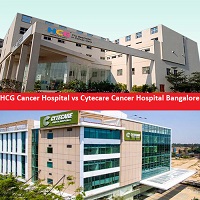External Beam Radiation Therapy:
This technique involves delivering radiation from outside the body using advanced machines. A technique called external beam therapy (EBRT) uses an external source to deliver precisely focused, high-energy x-ray or electron beams to a patient’s tumour. A linear accelerator (LINAC) typically produces beams that are directed towards killing cancer cells while sparing surrounding healthy tissues. More deep-seated tumours are treated using megavoltage photons, while skin cancer and tumours located in superficial tissues are treated with electron beams.
External beam radiation therapy (EBRT) is frequently administered to cancer patients using linear accelerators, also known as Linacs. High-energy X-rays that are tailored to the precise size, shape, and location of a tumour are delivered using a linear accelerator that has been programmed to do so. With little damage to the surrounding healthy tissue, the LINAC can precisely target and eliminate malignant cells in a patient’s body.
There are various forms of external-beam radiation therapy, including:
Three-dimensional conformal radiation therapy (3D-CRT): Using computed tomography (CT) or magnetic resonance imaging (MRI) scans, precise 3-dimensional images of the malignancy are produced during this type of radiation therapy. These pictures are used by the medical staff to direct the beam. With this method, the medical staff can safely provide larger radiation therapy dosages while minimising harm to healthy tissue. This reduces the chance of adverse effects.
Intensity-modulated radiation treatment (IMRT): Utilising computer-controlled linear accelerators, intensity-modulated radiation treatment (IMRT) is a highly advanced form of precision radiotherapy. By varying the strength of radiation in a number of tiny beamlets to match the 3D shape of the tumour while preserving the surrounding normal tissues, IMRT enables precise radiation dosing of the tumour. Dose painting, or the targeted administration of high doses of radiation to high-risk locations while low doses are delivered to low-risk areas, is a technique that can be used with IMRT to treat tumour masses. IMRT is utilised to treat a variety of solid tumours, including head and neck, brain, prostate, lung, uterine, gastrointestinal, breast, and others, when there are important surrounding structures and keeping them intact is a top goal.
Volumetric arc therapy (VMAT): A unique form of IMRT technology is volumetric arc therapy (VMAT). The linear accelerator revolves around the patient while delivering radiation in the form of an arc and changing the radiation beam’s strength as it travels around the body. In comparison to IMRT, it offers improved clinical outcomes with shorter treatment times.
Deep inspiration breath-hold (DIBH): Radiation therapy patients are advised to take a deep breath and hold it while receiving radiation treatment. This approach is known as deep inspiration breath-hold, or DIBH. The heart is forced out and the lungs are expanded to almost full capacity. When radiation therapy needs to be administered in the chest area while minimising radiation dosage to the heart, DIBH is especially helpful. DIBH is beneficial in radiation therapy for a left breast carcinoma, chest-regional lymphoma, and more tumours in the chest or upper abdomen.
Total Body Irradiation (TBI): Radiation therapy is known as total body irradiation (TBI) when it is administered to the entire body. Total Body Irradiation (TBI) is used for the treatment of conditions where a bone marrow transplant is planned, such as leukaemia in adults and children, including acute lymphoblastic leukaemia (ALL), acute myeloid leukaemia (AML), aplastic anaemia, etc. Total Body Irradiation
Total Skin Electron Therapy (TSET): Electron beam therapy is referred to as total skin electron therapy (TSET) when it is administered to the entire skin. TSET is used to treat skin conditions including mycosis fungoides, a form of skin cancer that typically affects the entire body. The Kathmandu Cancer Centre (KCC) was the first to introduce TSET to the nation. We have all the tools we need to deliver TSET, and up to this point, we have used TSET to treat 3 patients.
Proton beam treatment: Protons are used in this procedure in place of X-rays. A positively charged particle is a proton. Protons have the power to kill cancer cells at high energies. Protons deliver a precise dose of radiation therapy to the targeted tumour. Proton therapy delivers much less radiation outside the tumour than X-ray beams. This minimises harm to the tissue in the area. It needs specialised equipment to perform proton therapy, a relatively new medical procedure. Presently, only specific cancer types are treated with it. Study up on proton therapy.
Image-guided radiation therapy (IGRT): Imaging is used in IGRT during radiation therapy. Images are compared to those taken before to the start of treatment and while it is being administered. This enables medical professionals to accurately position the radiation.
Stereotactic radiation therapy (SRT): With this therapy, a small tumour area receives a strong, focused dosage. The patient needs to be quite motionless. Moving parts are limited by a head frame or individual body moulds. SRT is frequently administered in a single session or in fewer than ten sessions. More than one SRT training may be necessary for some persons.











